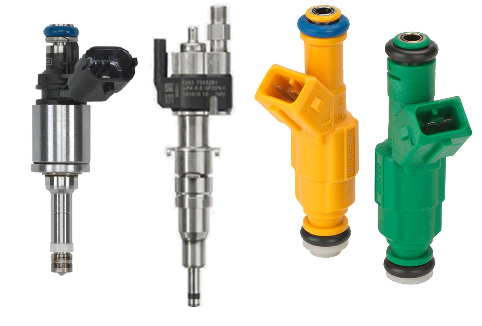Can a megohmmeter check fail but resistance check pass on a fuel injector?
A megohmmeter (Megger) may indicate a failure while a standard low-resistance measurement shows acceptable results because the two instruments test very different electrical properties under very different conditions.
A low-resistance test (using a multimeter or ohmmeter) applies a very low voltage, typically under 1–10 volts, and measures the continuity and resistance of conductors or windings. This type of test verifies that there are no open circuits, high-resistance connections, or shorted turns, but it does not stress the insulation in any meaningful way. If the insulation has only minor degradation, moisture contamination, or microcracks, a low-voltage resistance test will not detect it because the applied voltage is too small to cause current to leak through those weak spots.
A Megger test, on the other hand, applies a much higher DC voltage—commonly 250V, 500V, 1000V, or higher—across the insulation. This voltage stresses the dielectric material to simulate operating or over-voltage conditions. The Megger measures insulation resistance (IR), which reflects how well the insulation prevents current leakage. If the insulation is deteriorating, contaminated with moisture, oil, carbon tracking, or has micro-fractures between windings or to ground, the Megger’s higher voltage can cause leakage currents that a low-voltage test would never reveal.
Typical causes for a Megger failure despite a good resistance check include:
-
Moisture absorption in windings or insulation materials, lowering dielectric strength.
-
Surface contamination (oil, carbon, or conductive dust) that allows leakage paths when high voltage is applied.
-
Insulation breakdown between windings, not necessarily to ground—something a simple continuity test cannot detect.
-
Temperature effects—insulation resistance drops significantly with increasing temperature, which can lead to a fail at normal operating conditions even if it passes cold.
-
Aging or thermal stress—long-term exposure to heat and electrical stress can create pinholes, microcracks, or carbonized paths that conduct under high voltage.
In short, a low-resistance test confirms that conductors are electrically continuous and not shorted, while a Megger test evaluates whether the insulation can withstand high voltage without allowing leakage current. A component can therefore pass a resistance test but fail a Megger test because it’s mechanically and electrically continuous but no longer properly insulated.
Said another way, when a Megger test fails but a regular resistance test passes, it usually means the wiring or component still conducts electricity properly, but the insulation can no longer handle high voltage safely. In other words, the Megger is showing that while things look fine under normal conditions, they may fail when the system is under real operating voltage or load.
We can typically test Piezoelectric injectors using a Megohmmeter, but not GDI or port injectors. Megohmmeter tests apply 125–250 volts, while GDI injectors operate at around 50–60 volts and port injectors at only 12 volts. A12-volt fuel injector can show good continuity while still having bad insulation. Continuity and insulation resistance are two different electrical tests that can fail independently of one another. This is often why port injectors fail to pulse even though the coil appears to test good.

